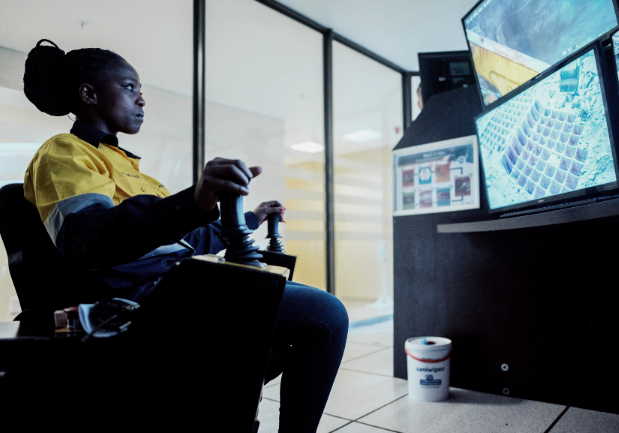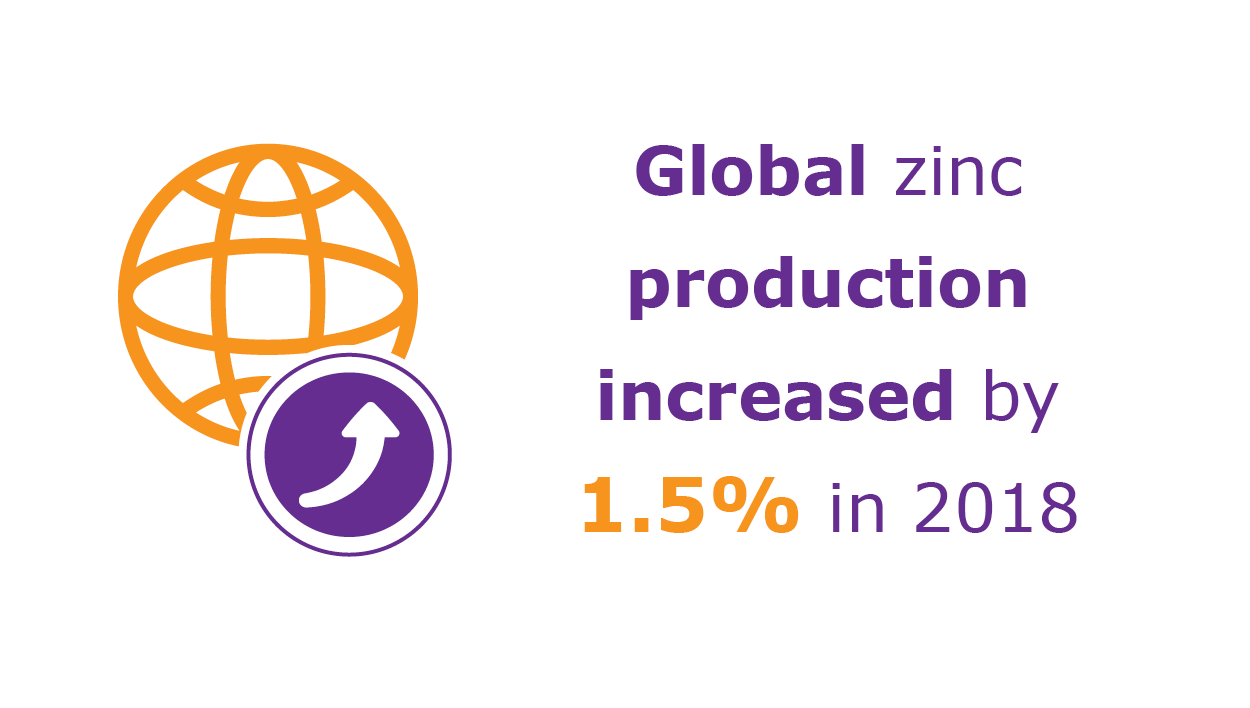Higher profit margins, improved sustainability and a safer work environment. These are some of the business benefits of increased participation of women in the mining sector, according to the Minerals Council South Africa (MCSA) and NPO Women in Mining South Africa (WiMSA). Yet the most recent data – from 2019 – shows that only 17% of top management in mining are women and 18% are technical professionals, while 24% of the mining workforce consists of professionally qualified women in South Africa.
‘Mining companies are becoming increasingly aware of both the business and moral imperative of enhancing the representation of women across all levels and are working to increase female representation through various initiatives,’ says Thuthula Balfour, head of both health at MCSA and the organisation’s Women in Mining task team.
The moral imperative – increased participation of women in the economy overall, including mining, protects them from discrimination and gender-based violence – bears further examination.
‘Gender-based inequalities lead to gender-based discrimination, which is already deeply rooted and present in society,’ says WiMSA’s deputy chairperson Maria Combrink. ‘Globally, women under the age of 40 are more likely to be poorer than the men in the same age class. In 2018, 48% of adolescent girls in sub-Saharan Africa remained out of school. Environmental and natural disasters affect women disproportionately – these events significantly increase the burden on women as water and firewood collection time and distance increases, or collection efforts are thwarted.
‘Further to this, studies highlight the interlinkages between gender equality and environmental sustainability. Gender equality must be made a priority to realise growth on political, social and economic levels, as equality is the most important driver to prevent violence against women and girls.’

With regard to gender equality in terms of mining, she says, ‘when basic human rights are promoted and cemented in formal work environments the broader social inequalities can be addressed. Including women brings benefits to mining companies and mining communities at large’.
If it’s such a win-win situation to bring more women into the fold, so to speak, why hasn’t more progress been made? While the inclusion statistics are undeniably too low, it helps to contextualise the progress already made in face of substantial barriers.
Women in mining have historically faced legal exclusion from mining underground (and while they are no longer excluded on legal grounds, there are some tasks that preclude women due to the physiological strength required, particularly underground, where they are also much more vulnerable to sexual harassment and assault), not to mention deeply ingrained biases and superstitions regarding the involvement of females in mining. Yet, the number of women working in the mining sector (both above and below ground) has increased significantly in the past 20 years – from around 11 400 in 2002 to around 70 145 in 2022.
Women now comprise 15% of the entire labour force, and more women sit at the top of Africa-based metals and mining companies than the global average, as an analysis of S&P Global Market Intelligence data shows.
In addition, the push for inclusion is gaining considerable momentum. ‘In the past 12 months, there seems to be a surge in the number of women in mining organisations in South Africa,’ says Combrink.

This, she add, likely has to do with the MCSA and the Mine Health and Safety Council (an entity comprising government, employers and labour members) being part of the institutions that now have newly created support systems in place for women.
The MCSA’s Women in Mining initiative was launched in March 2020 to streamline the industry’s strategies to advance women in the sector by focusing on progressing female representation, and encouraging decisions that are in the best interests of women and the industry.
‘The Women in Mining Leadership Forum [WiMLF] was established in 2020 to provide strategic direction to consolidate industry actions to eliminate challenges faced by women in mining and to increase attraction, retention and promotion of women in the mining sector,’ says Balfour.
‘The WiMLF is chaired and led by Minerals Council president Nolitha Fakude and consists of member company CEOs, senior executives and leaders who are committed to the transformation of the South African mining industry and creating a safe, diverse, equitable and inclusive working environment for all.’
The WiMLF recently established a Gender Diversity and Inclusion Dashboard, through which member companies contribute essential data regarding their policies and initiatives aimed at addressing gender diversity issues in the mining industry.
According to the November 2023 WiMLF newsletter, ‘the insights gathered from the Gender Diversity and Inclusion Dashboard play a pivotal role in assessing the progress made by member companies in terms of gender diversity policies and practices across their operations. This continuous monitoring and reporting mechanism offers an avenue for tracking and improving gender diversity, ultimately contributing to more inclusive and equitable workplaces in the mining industry’.

The MCSA has set a bold target of women comprising 30% to 40% of the industry – and 50% of management – over the next decade. This is no minor thing, considering the MCSA represents 90% of South African mineral production value, including giants such as Anglo American Platinum, Kumba Iron Ore, AngloGold Ashanti, Implats, African Rainbow Minerals, De Beers Group, Exxaro, Glencore, Gold Fields, Sasol and Sibanye-Stillwater.
‘I believe most mining companies that are interested in growth and investment have implemented polices regarding the employment and retention of women in mining,’ says Combrink. ‘Anglo American, AngloGold Ashanti, Rio Tinto – they are all doing excellent work in the gender equality; even extending the programmes to contractor and community levels.’
In 2019, Anglo American Platinum – whose female CEO, Natascha Viljoen, resigned in 2023 to join US miner Newmont – launched Living with Dignity, a research collaboration in South Africa with NGO partner, International Alert. Then, in 2022, it piloted its first Living with Dignity Hub in Johannesburg, an independent ‘support mechanism’ for employees, contractors and their families. The hub has a core staff of five experienced professionals who receive reports of dignity harms and appropriately address them through effective case management and end-to-end support for victims
Although it is financially supported by Amplats and works closely with its human resources teams and business units, it acts as an independent channel.
According to Vanessa Doble, who heads the South African Living with Dignity Hub, ‘the hub is underpinned by three fundamental characteristics – it is independent, victim-centric and adopts a zero-tolerance approach to dignity harms. Everyone’s journey in this space is individual, and we want to ensure we can help people in a trusted and empathetic way’. In keeping with its zero-tolerance approach, the hub logs and responds to all matters brought to its attention. No misconduct is excluded or excused, and ‘all matters are taken seriously and dealt with’.
At Rio Tinto, female representation in its workforce has grown from 17.7% in 2018 to 23% in 2022, and the company displayed a commitment to rooting out gender-based discrimination within the organisation by releasing a report exposing these problems at its global operations. The eight-month study saw more than 10 000 people share their experiences, views and insights via an online survey, as well as through more than 100 group listening sessions, 85 confidential individual listening sessions and close to 140 individual written submissions.
It found that bullying and sexism were systemic across the organisation’s worksites, with almost half of participants having experienced bullying; 28% of women and 6.7% of men had experienced sexual harassment at work; and 21 women reported actual or attempted rape or sexual assault. The report made a number of ameliorative recommendations based on these findings, which Rio Tinto is in the process of implementing.
While gender parity is clearly still a challenge for South Africa’s mining industry, the progress made thus far – as well as recent intensification of commitment towards inclusion – demonstrates that change is clearly possible, clearly beneficial and gaining momentum.






